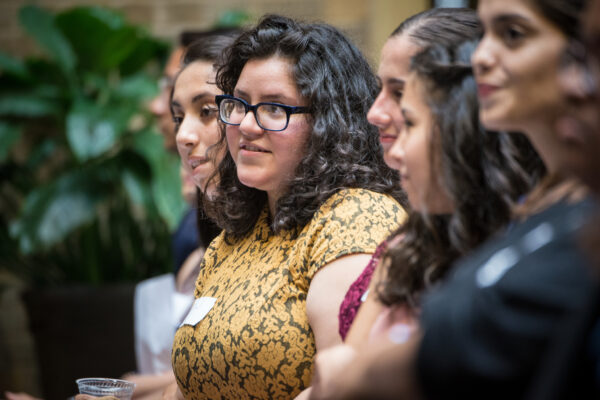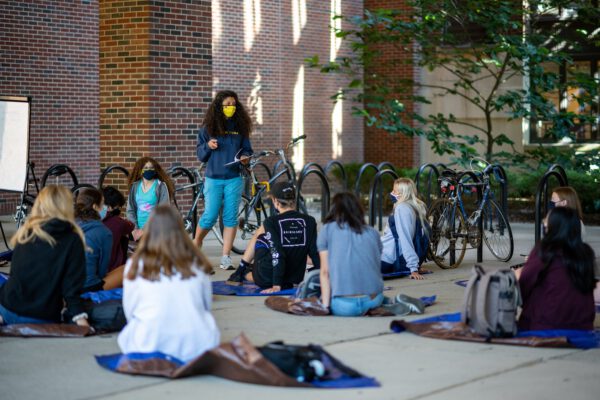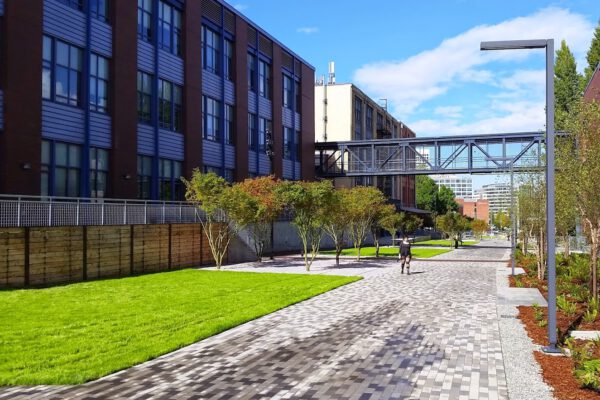By Jennifer Crandall and Gina A. Garcia
This is the latest post in a series sparked by recent student protests and the national dialogue on diversity and inclusion.
I (Gina) recently participated in a diversity training focused on race and racism in higher education, an area I focus on in my own research. As I sat in the training, I felt invisible as the presenter provided numerous activities and resources that addressed a black and white mono-racial binary.
In that training, my experience as a Latina-identified woman was diminished. The facilitator was well intentioned, well informed, and well respected for his knowledge in this area and had not intended to make me feel as if my experience as a racialized person did not matter. Yet that is how I felt.
While I have experienced blatant racism and sexism in my predominantly white institution situated in a mostly white urban city where 2 percent of the population shares a common racial/ethnic/cultural experience with me, I spend most of my time processing these types of daily microaggressions, wondering if I am imagining them. I often ask myself, “Am I overreacting?” “Did that just happen?”
This experience is not unique. Many people of color, women, LGBTQ, and other “minoritized” groups—social groups that may not be the minority in number but continue to be systemically oppressed and excluded—on college and university campuses experience microaggressions on a regular basis.
Forms of Microaggressions
Pioneering researcher Derald Sue defines microaggressions as “brief and commonplace daily verbal, behavioral, and environmental indignities, whether intentional or unintentional, that communicate hostile, derogatory, or negative racial, gender, sexual orientation, and religious slights and insults to the target person or group” (5). Even further, Sue and other researchers suggest there are different forms of microaggressions, including microassaults (explicit, verbal and nonverbal derogatory remarks), microinsults, (subtle remarks about a person’s minoritized identities that are insensitive, demeaning and rude), and microinvalidations (an experience that excludes, negates, and nullifies a person’s minoritized reality). See the below table for specific examples.
My experience in a diversity training that excluded my racial/ethnic/cultural experience is an example of a microinvalidation. Although the presenter did not intentionally exclude or degrade me, the impact was significant and serves as a reminder that intent does not matter, only the impact on the minoritized person. While we focus on racial microaggressions in this blog, there are many more based on other social identities, such as gender, sexual orientation, socioeconomic status, and other minoritized identities (see ‘additional resources’ below).

Microaggressions vs. Racialized Aggressions
Chester Pierce first introduced the idea of racial microaggressions in the late 1960s in the field of psychiatry, while scholars like Derald Sue and Daniel Solórzano have further conceptualized the idea in counseling and education, respectively. Within higher education literature, there are an abundance of articles outlining the ways in which various racial groups experience microaggressions on college campuses (see, for example, Garcia, 2016; McCabe, 2009; Minikel-Lacocque, 2012; Solórzano, Ceja, & Yosso, 2000).
In recent years, the term has moved beyond the academic journals of psychiatry, counseling and education into mainstream media (Buzzfeed, for example, showcased a digital photo project on microaggressions experienced by Fordham students and alumni). Its more widespread use has led to an increase in criticism, with some suggesting that racialized groups are too sensitive and unable to take a joke, as illustrated in a Fox News clip. Others argue that while Sue and colleagues suggest that “old fashioned racism” (i.e., blatant racism) is dead in the 21st century, there are a growing number of racialized aggressions, particularly on college and university campuses.
Garcia and Johnston-Guerrero suggest that while microinsults and microinvalidations are subtle and often unintentional and unconscious to the perpetrator—albeit still harmful to the target—racialized aggressions are intentional. Examples include graffiti swastikas written on residence hall doors, racial epithets shouted at students, and makeshift nooses hung on campus. When racialized aggressions occur, higher education leaders often act immediately, as they are blatantly oppressive, offensive and racialized. The same type of response is not always the case when people on campus experience microaggressions, as they are often difficult to name and identify.
Effects of Racial Microaggressions
Whether subtle or aggressive in nature, the effects of microaggressions can be physically, emotionally and psychologically detrimental. Sue and others report that racial microaggressions can result in harmful psychological and physiological effects such as anxiety, nausea, resentment, isolation and depression. On college campuses, the perpetual nature of racial microaggressions may ultimately lead to large attrition rates of all minoritized constituents, including students, faculty, staff and campus leaders. This claim is supported by decades of research that shows when racialized groups experience a hostile campus climate, it negatively affects their sense of belonging, cross-racial interactions and degree completion (see Hurtado et al., 2012 for a discussion of the research on campus climate effects).
The challenge for college and university leaders, faculty, and staff is that racial microaggressions are systemic, meaning they are embedded within campus policies, programs and practices, subjecting community members to cultural standards that normalize whiteness. Moreover, the pervasive nature of microaggressions makes them difficult to address and eliminate.
How then do we move forward in order to disrupt racial microaggressions while creating a more welcoming and inclusive campus environment for all minoritized groups?
Actionable Steps for Creating an Inclusive Campus Racial Climate
In presenting actionable steps for confronting racial microaggressions, we focus broadly on an inclusive campus racial climate approach. This approach assumes that pluralism, or the belief that people should coexist in mutually beneficial and respectful ways for the common good, is inherent in the mission of most colleges and universities.
Include racially responsive training for administrators, faculty, staff and student leaders that explicitly addresses race and racism. It is difficult to respond to racial microaggressions, as both microaggressors and targets of microaggressions can lack the critical consciousness to recognize them, let alone disrupt and eliminate them. The first step is acknowledging that race and racism is enduring in the United States, and that microaggressions exist as a result. Consider using a microaggressions framework as a tool for offering a common language and a nuanced understanding of microaggressions. Training should also have administrators, faculty, staff and student leaders examine their own biases and prejudices to raise awareness and understanding of racism generally, but specifically among the majority population. Recognizing our own biases and prejudices is a first step towards limiting the occurrence of racial microaggressions.
Support co-curricular opportunities for students that have a meaningful effect on campus racial climate. This includes supporting student activism for racial and social change in addition to the development of campus communities where all constituents understand and learn about the racial and cultural wealth inherent within minoritized communities. Incentivizing faculty or staff to lead or advise students could further facilitate such co-curricular activities. A recent Higher Education Today blog on student activism suggests that it promotes critical thinking, civic engagement and leadership and serves as a learning opportunity for campus leaders. Research also shows that membership in a community that represents students’ racial and cultural wealth can provide an inclusive space that galvanizes students toward action against racial microaggressions. Intergroup dialogue programs, first established at the University of Michigan, can also promote cross-racial group conversations that lead to better racial understanding.
Assess administrators, faculty, staff and student perceptions of racial inclusivity. In light of recent student protests on college and university campuses that sparked lists of demands to campus leaders, institutions need to be aware of how knowledgeable campus constituents are about the campus racial climate and its effects on students’ experiences. The University of California’s Higher Education Research Institute offers a Faculty Survey and a Diverse Learning Environments Survey (DLE) that can assist campuses with assessing faculty and students’ perceptions of institutional racial climate and diversity. The survey provides institutions with disaggregated data to evaluate its alignment between diversity efforts and campus practices. This is just one of many forms of assessment that campuses can undertake to better understand the knowledge that faculty, staff and students have about race, racism and other issues of inclusion.
Strive for “dynamic diversity.” Institutions tend to measure racial diversity by demographics or the extent to which they have reached the critical mass of racialized students necessary to reap the benefits of a multiracial/ethnic student population. While tracking numbers is a step in the right direction, this approach falls short in addressing the complex task of creating a sustainable, inclusive environment. Dynamic diversity recognizes the multifaceted relationship students have with their environments and offers four components institutions should tend to: 1) cultivate a positive racial climate, 2) attend to institutional history and context, 3) break down barriers to cross-racial engagement, and 4) nurture cross-racial interactions.
Empower cross-functional teams committed to addressing racially inequitable educational environments and outcomes. The Equity Scorecard, developed by the University of Southern California’s Center for Urban Education, engages faculty, staff and administrators in a change process designed to create equitable outcomes for racialized students. Each of the scorecards’ five phases uses evidence-based inquiry tools to assess programs, curricula and learning outcomes and can be used to examine the impact campus racial climate has on racialized students. The phases—1) laying the groundwork, 2) defining the problem, 3) assessing interventions, 4) implementing solutions, and 5) evaluating results—culminate in a scorecard with actions institutions could take to meet their goals in addition to criteria for evaluating progress toward those goals.
Evaluate degree of “inclusive excellence,” or how well colleges and universities and their leaders infuse diversity, equity and educational quality into institutional missions, goals and practices. The Inclusive Excellence Toolkit, created by the University of Denver (DU) faculty to advance the university’s commitment to inclusive excellence, moves beyond traditional measures of diversity, such as demographic data, and measures an institution’s progress toward inclusive excellence. DU and other institutions have used the toolkit to measure progress toward diversity and to improve campus racial climate. Similar to the DLE and Equity Scorecard mentioned above, institutions need to first establish a baseline to know where they are moving from and where they need to focus their efforts to attain racial equity and inclusion.
While racial microaggressions are prevalent in colleges and universities, we have witnessed an increased understanding of what these microaggressions look like and their implications for minoritized groups. With the abundance of research and knowledge available about racial and other forms of microaggressions, and the tools available for understanding and addressing them—a few of which we have laid out here—time is now for campus administrators, faculty, staff and student leaders to educate themselves, address their own biases and move toward disrupting racism within our institutions. We can no longer merely work toward multiculturalism and inclusivity, but rather we must address the larger systemic issues that allow racial microaggressions to flourish on campus. Moving toward a disruption of the larger system of racial oppression will lead to greater inclusivity and equity for all.
Additional resources
Readings
Williams, D. A., Berger, J. B., & McClendon, S. A. (2005). Toward a model of inclusive excellence and change in postsecondary institutions. American Association of Colleges & Universities: Washington, DC.
Yosso, T. J., Smith, W. A., Ceja, M., & Solórzano, D. G. (2009). Critical race theory, racial microaggressions, and campus racial climate for Latina/o undergraduates. Harvard Educational Review, 79:4, 659-690.
Young, K., Anderson, M., & Stewart, S. (2015). Hierarchical Microaggressions in Higher Education. Journal of Diversity in Higher Education, 8: 1, 61-71.
YouTube
Microaggressions in Everyday Life (4 minutes): Derald Wing Sue, professor of psychology and education at Columbia Teachers College, talks about and provides examples of racial and gender microaggressions, including techniques for addressing them.
If you have any questions or comments about this blog post, please contact us.


